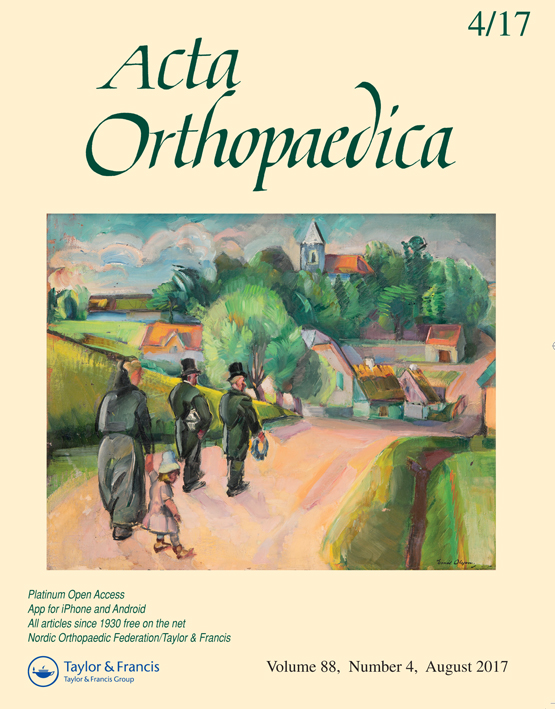Poor relation between biomechanical and clinical studies for the proximal femoral locking compression plate
DOI:
https://doi.org/10.1080/17453674.2017.1304207Abstract
Background and purpose — The proximal femur locking compression plate (PF-LCP) is a new concept in the treatment of hip fractures. When releasing new implants onto the market, biomechanical studies are conducted to evaluate performance of the implant. We investigated the relation between biomechanical and clinical studies on PF-LCP. Methods — A systematic literature search of relevant biomechanical and clinical studies was conducted in PubMed on December 1, 2015. 7 biomechanical studies and 15 clinical studies were included. Results — Even though the biomechanical studies showed equivalent or higher failure loads for femoral neck fracture, the clinical results were far worse, with a 37% complication rate. There were no biomechanical studies on pertrochanteric fractures. Biomechanical studies on subtrochanteric fractures showed that PF-LCP had a lower failure load than with proximal femoral nail, but higher than with angled blade plate. 4 clinical studies had complication rates less than 8% and 9 studies had complication rates between 15% and 53%. Interpretation — There was no clear relation between biomechanical and clinical studies. Biomechanical studies are generally inherently different from clinical studies, as they examine the best possible theoretical use of the implant without considering the long-term outcome in a clinical setting. Properly designed clinical studies are mandatory when introducing new implants, and they cannot be replaced by biomechanical studies.Downloads
Download data is not yet available.
Downloads
Published
2017-07-04
How to Cite
Viberg, B., Rasmussen, K. M. V., Overgaard, S., & Rogmark, C. (2017). Poor relation between biomechanical and clinical studies for the proximal femoral locking compression plate. Acta Orthopaedica, 88(4), 427–433. https://doi.org/10.1080/17453674.2017.1304207
Issue
Section
Articles
License

This work is licensed under a Creative Commons Attribution-NonCommercial 3.0 Unported License.
Acta Orthopaedica (Scandinavica) content is available freely online as from volume 1, 1930. The journal owner owns the copyright for all material published until volume 80, 2009. As of June 2009, the journal has however been published fully Open Access, meaning the authors retain copyright to their work. As of June 2009, articles have been published under CC-BY-NC or CC-BY licenses, unless otherwise specified.







